Spectacular plenty roses are welcome decoration for any site. But Siberian gardeners often avoid growing roses due to not very favorable climatic conditions of their region. Growing roses to Siberia is possible that numerous positive examples from land owners from different parts of Siberia prove. The choice of the right winter-hardy variety of plenty roses is almost the only key to the successful growing of this decorative plant. In this article we will try to figure out the virtues and disadvantages of various varieties of plenty roses for cultivation in the climatic conditions of Siberia, we learn about the nuances of planting and care for a rosary.
Pleet Roses in Siberia - Botanical Description
- There are no specific data on the homeland of the plenty rose. Mention of this decorative plant is found in many countries in Europe and Asia. But some scientists believe that the word "ROSA" is the abbreviated name of the pink tree - "rhododendron".
- Pleet roses are a decorative shrub plant belonging to the family of pink.
- Pleet roses have long glued tolerant shoots that are capable of reaching 6 m in length.
- On the shoots of the plenty roses there are spines that can injure the skin.
- Depending on how the variety belongs to the plethious rose, the color of its shoots can vary from light green to dark green, brown.
- Pleet roses are known for their spectacular colors. They can be almost any color and shape. You can meet terry, semi-grade flowers with the petals of an inverse-shaped form. Flowers of plenty roses most often grow in inflorescences.
- The root system of the plenty rose is quite growing both vertically down and horizontally.
Are there plenty and curly roses? In essence, this is the same plant. The people are more often found in the name "Curving Rose". But none of the varieties of roses are able to chase around the support. Her shoots grow up and on the sides, cling to their spikes behind the support, nearby trees and shrubs. Curling roses also have no special "mustache" that would help the shrub to be fixed or chained around the support.
Pleet rose in Siberia - Photo
Difficulties of growing plenty roses in Siberia
Siberia takes about 60% of Russia. It is conventionally divided into Eastern Siberia and Western Siberia. The climate of Western Siberia is unusually severe. In winter, the accumulation of a mercury thermometer can fall below 40-50 degrees. Eastern Siberia is characterized by more "soft" winter and pretty hot summer seasons. The most important secret to the successful cultivation of the plenty rose in the hard climatic conditions of Siberia is the choice of a variety derived specifically for the Siberian climate. Buy seedlings grown only in local nurseries. Beginner gardeners can also be quite difficult to determine the dates of planting, the timing of breeding, feeding, etc. Every year you need to focus on specific climatic conditions.
Varieties of plenty roses in Siberia
Pleet Roses for Siberia - Groups
In international practice, the plenty roses are conditionally divided into 3 large groups:
- "Ramblers". Roses from this group are called true plenty roses. Their sharpening shoots can reach 1.5 to 5 m in length, painted into a saturated green color. Spikes from "Rambler", like other species of plenty roses, are present in large quantities on shoots. A distinctive feature of this variety of plenty roses are small sizes of colors - 2-2.5 cm in diameter. But the decorativeness of the plant does not decrease because of this. For a whole month you can admire the very abundant flowering of curly roses, exacerating weak fragrance. The painting of terry or semi-grade colors can be different depending on the variety. "Ramblers" are known for their excellent winter-hardy characteristics;
- "Claimbers". Looking roses with high decorative value were obtained as a result of numerous rose crossings - "Ramblerians" with remote roses, roses with floribund, tea and tea-hybrid roses. The distinctive features of this group of plenty roses are their intense growth, the length of the shoots from 2 to 4 meters, the diameter of flowers over 4 cm. Bright and fragrant flowers are going to loose inflorescences. Roses can grow and represented bushes that do not require the creation of support. Gardeners value this variety of plenty roses for excellent frost-resistant characteristics and high resistance of diseases, endurance in adverse climatic conditions;
- "KLAYNGI" - a kind of plenty roses, which were derived due to the buding mutations of tea-hybrid roses, roses Floribunda, Grandiflora, etc. In the harsh climatic conditions of Siberia, this type of roses is almost impossible. They prefer to grow in southern regions with a mild climate. Flowers of "Claming" have rather large sizes - up to 14 cm in diameter. They can grow on shoots as single, so going to inflorescences. A distinctive feature of this variety of plenty roses is a high growth rate and re-flowering.
Pleet Roses for Siberia - Sort
The choice of the right variety is one of the most important points on which you must focus if you want to grow a chic vacuum rose on a plot in Siberia. Consider the most popular varieties of plenty roses, which differ in high rates of frost resistance, as well as resistance to pests, diseases adverse environmental conditions.
- Chippendale. The grade of a fleece rose, which is loved by many gardeners of the Urals and Siberia. Flowers are painted mainly in orange or reddish shades. During flowering, numerous inflorescences from terry colors exude a thin and attractive flavor. Roses grow lush bushes up to 120 cm high and diameter up to 100 cm.
- Rosarium Utersen. The variety known excellent winter-hardy characteristics, as well as the ability to quickly recover in spring. Plant shoots under favorable growth conditions can reach up to 3 m in length. Of course, with such sizes, the rose will need a support. Blossom abundant and very long. The fragrant buds have a pink color and reach from 4 to 6 cm in diameter.
- Mont Blanc. Winter-hardy variety of plenty roses, whose shoots can reach 5 meters. Long shoots densely decorate snow-white terry flowers with a diameter of up to 12 cm. One bouton can consist of 60-70 petals. Rose leaves have a dark green glittering surface. Pleetted Rose Mont Blanc although once, but it is very long.
- Lavinia is a variety of plenty rose, which is known for highly resistant to diseases and adverse climatic conditions. During the flowering period, the rose is abundantly covered with pink buds, because of which most of the green foliage is not visible. The plant can reach 2-3 meters in height and 2 meters wide.
- Pierre de Ronsar. This variety of plenty roses is characterized by wave-like flowering. The first buds begin to reveal in the second half of June. The core of the flower is painted in a pinkish color, and side petals in a snow-white. In diameter, the flower usually reaches 7 cm. The following periods of flowering slightly inferior on the pomp of buds. If Pierre De Ronsar's plenty rose is not enough heat, then the buds can not be completely disclosed, and the side petals can acquire a greenish tint.
- Gloria dei is a great frost-resistant grade suitable for growing in Siberia and Urals. The plant can reach 2-meters in height. The foliage of a saturated green color contrasts with lush terry colors, which combine several shades. The middle of the bud has a gentle peach color, and the petals around the edges - the pinkish color, which as the plant grows it to the cream shade. The blossomed roses retain an attractive appearance for a very long time.
- Alchemist. The rose of this variety can be grown by both plenty and bush. A powerful plant under favorable conditions can form shoots up to 5 meters long. The special decorativeness of the rose gives its huge buds reaching in diameter 11 cm. Color color changes several times. At first, the entire bud has a yellowish tint, then its core acquires a pink shade, then the side petals burn out and become cream or practically snow-white. The bloom of the plenty rose is an alchemist occurs once per season and lasts a few weeks.
- Golden fragrant. The variety of plenty roses, which was derived by Russian breeders. A plant with a powerful root system, long and strong shoots grows perfectly in the regions with harsh climatic conditions. The variety received its name due to the spectacular yellow color of the terry. Blossom abundant, wearing a wave-like character.
- Swan lake - plenty rose - "Climber", derived by Russian breeders. Blossom abundant and long. Thined snow-white buds decorate the plant right up to autumn frosts. Rose will especially effectively look at specially created supports, where it can reach up to 3 meters in height.
- Sympathy. The plenty rose of this variety will decorate your plot with a bright flame of your colors throughout the summer and autumn. Flowers can have red, crimson, burgundy, cherry color. Rose can reach 2.5 m in height.
- Bayazo. The rose of this variety grows to 2.5 - 3 meters in height. The plant is great for vertical landscaping, grows beautifully on specially created supports. Flowering is waveled. Bayazzo plenty rose flowers painted in a gentle strawberry color with a golden core. The advantage of this variety consider its high resistance to fungal diseases, as well as excellent frost resistance.
- Gent a blue - excellent selection of plenty roses for growing in Siberia. The plant blooms almost to autumn frosts, withstands the temperature to -23 degrees. Rose flowers are small - 3-4 cm in diameter. Purple, purple, lilac inflorescences exude a pleasant sweet flavor. A feature of this variety is that the shoots of roses almost do not have spikes, very flexible, growing beautifully on the arches and on other supports.
- Coral dawn. The plenty rose of this variety prefers to grow on well-lit terrain. Soothes can reach 3 meters in length, there are many spiny spikes on them. Flowers are terry and very large roses - up to 9 cm in diameter. One bud consists of an average of 40 petals. Peach-pink flowers look very impressive against the background of brilliant dark green foliage.
- Lagoon. Pleet rose is very decorative. During the flowering period, the shoots are abundantly covered with luxurious inflorescences of bright pink roses. The plant is characterized by wave bloom. The variety is also known for high frost resistance - can tolerate frost to -23 degrees. Gardeners appreciate the plenty of the lagoon's rose for its excellent endurance. The plant feels perfectly both in the rainy season and during the drought period.
Pleet Roses in Siberia - Growing
Choose a place to plant plenty roses in Siberia
The choice of landing site of the plenty rose in Siberia is very important. Spring in this region is late, and autumn comes early. To make the plant on your site comfortably, try to take into account the following recommendations:
- to plant the plenty rose in Siberia, avoid lowlands. Soil is always fluent in such a place, and the spring "wakes up for a long time." Select the sublime section;
- most varieties of plenty roses prefer to grow at sunny areas. But also on too outdoor sunny location is not too like a capricious rose. Under the influence of direct sunlight, flowering processes will occur in accelerated mode, and color painting will be not so bright and saturated. Try to pick a place where neighboring buildings, low buildings, trees or shrubs will create a light half;
- the plenty rose does not like strong winds. Try to pick up such a place for landing, which will be protected from strong northern, western or oriental winds;
- do not choose a place for planting a plenty rose, on which other roses have grown for a long time. Soil at such a plot is strongly "exhausted" and requires a reducing period;
- avoid planting a plenty rose on a plot with close adjacent to the surface of the groundwater. If there is no possibility to choose another landing place, you will have to make an artificial elevation for roses;
- when choosing a place of landing of a plenty rose, many gardeners make a frequent mistake - a rose is planted near the wall of a residential building. The desire to decorate your dwelling with this beautiful plant is understandable. But the contrast of the temperature between the warm wall of the house and cold air from the open side will not be quite useful for the plant. By that, close to the wall landing fraught with the fees of snowdrifts, icing. If you plan a plenty rose near the house I really want, then keep the minimum distance from the wall in 1 meter;
- when choosing a place of landing of a plenty rose, it is also worth considering the neighborhood of other ornamental plants. Almost all varieties of plenty roses will be perfectly looking next to Clematis, coniferous plants, floccals, daisies, crocuses, iris, etc.
We choose the soil for planting plenty roses in Siberia
Pleets are not very demanding of the quality of the soil, as it may seem at first glance. Consider the main "preferences" of this barbed beauty:
- most varieties of plenty roses prefer to grow on light and nutritious loams;
- pleet roses are better growing in weakly acid. If your portion is too sour or alkaline, then the situation will have to correct;
- pleet roses need good drainage. Some varieties will be thorough loosening;
- pleet roses positively relate to the presence of organics in the ground and other nutritional elements;
- unfortunately, on the poor, too heavy, clay soil, the plenty rose for will show itself in all its glory.
Choose time for planting plenty roses in Siberia
In the harsh climatic conditions, Siberia is possible both autumn and spring landing:
- spring is the perfect time for planting, transplants of young seedlings, roses who are overwhelmed in warm rooms. The soil must warm up and hurt for landing. Gardeners often determine the time of landing for roses at the beginning of the flowering of dandelions;
- in the fall, adults are most often transplanted by adults, which requires less time for acclimatization.
Preparation of landing pit and landing of plenty roses in Siberia
- The landing jam is desirable to prepare about 6 weeks before landing. It is necessary for soil shrinkage.
- If the soil on the plot is too acidic, then it is mandatory (500 grams of lime per 1 sq. M).
- To increase the soil nutrition during the soil resistance, humus or manure are made (10-20 kg per 1 sq. M).
- The earth must be moved carefully, removing all the roots of weeds.
- The size of the landing pit for the plenty rose depends on the size of the root system. Its depth can vary from 30 to 100 cm.
- The roots of the plenty rose before planting is desirable to soak for several hours in a solution of any root formation stimulator. If the roots are longer than 20 cm, then they can be shortened. This technique will help the plant to form a lot of lateral roots.
- If you are planning to plant several plenty roses, the landing pits are made at a minimum distance from each other in 2-3 meters.
- At the bottom of the landing pit, build a hill. Keep the seedling with one hand, and the second - straighten the roots so that they are located vertically down the hill. Gently begin to fill out the pit with the soil, periodically shook the seedling for the uniform distribution of the earth between the roots.
- In order to enhance the chances of the plenty rose to survive in strong frosts, Gardeners of Siberia are recommended to produce a swallowed landing. The place of vaccination after landing should be under Earth by 10-12 cm.
- Gently construct the ground around the plant and plenty of it.
- The plenty rose after planting is plunged with a layer of soil at 15 cm.
If you plan the container's plenty rose with a closed root system, the planting process is simplified at times. Landing pit is prepared in a similar way, as when landing roses with an open root system. The rose is neatly removed from the container and rolls up to the landing pit. After filling out the remaining space in the pit, the plant is watered and plunged.
Pleet Roses in Siberia - Care
Watering plenty roses in Siberia
The established irrigation regime is an important condition for the full growth and development of plenty roses in Siberia. This plant is known for its powerful and well-developed root system. Rose roots are growing both deep into and styling. Consider the basic rules for watering the curving roses in Siberia:
- the plenty rose, which was planted quite recently, should be watering often and abundantly until it takes;
- the plenty rose in Siberia should be watered rarely, but abundantly. In the summer, it will be enough for one watering a week. By one plant should leave about 15-20 liters of water;
- when watering the plenty roses, avoid the complete error - frequent watering with a small amount of water. With this irrigation of moisture, it will simply be not to reach the lower departments of the root system, it will be wedder only the upper layer of the Earth and roots of roses at the surface. In such a watering, you provoke the enhanced growth of side roots that will only get out of winter. If you still seem that the plant reacts positively to such frequent watering, then it is not. The following year, the plenty rose will be harder to leave the winter "hibernation", and bloom will not be so lush and long;
- when watering, it is impossible for water to fall on the leaves of the plenty rose. This can provoke the development of fungal diseases;
- for watering the plenty rose in Siberia, it is better to choose an early morning or time after sunset.
Fingering Pleet Roses in Siberia
If you want the plenty rose on your site in Siberia to show yourself in all its glory, do not forget to indulge the plant fertilizers. Pretty roses can be root and extraxnealing. Of course, each gardener has its own "scheme" of fertilizers. Consider an approximate plan for making root feeding:
- The 1st feeding of the plenty rose occurs immediately after removing the winter shelter. Under rose make an ammonium salter;
- The 2nd feeding of the plenty rose occurs approximately 2 weeks after removing the winter shelter. Fit the plant again ammonia Selitra;
- The 3rd feeding of a plenty rose occurs during the formation of buds. As a fertilizer, an integrated mineral fertilizer is used, which is intended specifically for roses;
- The 4th feeding of a plenty rose occurs shortly before the opening of the buds, before the start of flowering. Rose at this time as never needs "support." You can use the infusion of a cowboat or an infusion of avian litter;
- The 5th feeding of the plenty rose occurs after the end of the flowering period or the first flowering wave. Gardeners advise the use of comprehensive mineral fertilizer in the dosage, which is indicated in the instructions;
- The 6th and 7th feeding of the plenty rose in no way should contain nitrogen. You can choose such an integrated fertilizer without any problems in any modern store. The presence of nitrogen in the latter feeding of the plenty rose will provoke the growth of shoots, which will put a rose in winter.
To rose did not lose the decorativeness of the appearance, it is necessary to "indulge" with extractive feeders. Such feeders faster perform the "delivery" of nutrients to the leaves and shoots of the plant than this happens during the root feeding. Gardeners typically use a mixture of epine, chelate complex and any liquid complex fertilizer for spraying roses.
Creating support for plenty roses in Siberia
Not all varieties of plenty roses may require tapping to the support. Some plants have pretty strong upright stalks that allow growing rose in the form of a bush. Such plenty roses can be a spectacular decoration of your garden even in a single landing. In other cases, you can encourage roses to the supports of the following types:
- formation of a bush of plenty roses in the form of a fuel on a stretched wire. This way of tapping is most often choosing when they want to decorate the wall of the building. To begin with, the walls are riding the hooks at a distance of at least 50 cm from each other. You can also install a special lattice. Then stretch the wire in a plastic fever, on which rose shoots are fixed;
- small architectural forms. With the help of plenty roses, you can transform beyond recognition, arches, trolls, etc.;
- as a support for plenty roses, an ordinary pillar, which "Corolon" of the Eye, spoils the appearance of the plot. Roses shoots simply turn around the spiral column;
- a tree-neighbor can act as a support for plenty roses. Just keep in mind that "disconnect" then the rose from its support is almost impossible.
Do not choose as a support for plenty roses any plastic facilities. Despite the fact that this material seems very strong, as the plethorated rose is growing and the development of his weight just breaks such support.
Crops of plenty roses in Siberia
Pruning is one of the most important moments of leafing roses. If we neglect the trimming, then the plant will turn into an incomprehensible "ball" from the branches, and the fragrant and bright colors can be forgotten. Consider some important tips on pruning the plenty roses in Siberia:
- most of Siberia gardeners converge in the opinion that it should be triggered in spring after melting of snow. It is important and not hurry with trimming, and not to miss this moment;
- depending on the age and varieties of the plenty rose, the cropping of one of the 3 types may be needed. The first type of pruning provides for the removal of only old and damaged shoots. The second type of pruning provides for the removal of old, damaged shoots and shortening side shoots by a third. And the third type of trimming provides for the removal of old, damaged shoots, shortening the side shoots on a third and shortening part of the skeletal branches by a third;
- for trimming, you need to use sterile and sharp garden tools;
- remember that all sections should be even and smooth.
Wintering of plenty roses in Siberia
Depending on which part of Siberia, you live, what variety of the plenty rose is growing in your site, you may need various types of winter shelter:
- shelter roses snow. The most winter-hardy varieties of plenty roses can easily transfer the winter simply under the snow cover, under which the stable temperature will be maintained without sudden drops;
- shelter from plastic arcs, spunbond and polyethylene film. Two arcs are installed above the rose, the plant is plentifully sprinkled with dry ground, then they are covered with sponbond and film. The edges of the film are fixed with soil, but only after frosts come. If you close the rose before, it can "suffocate";
- shelter from polycarbonate pieces. Polycarbonate put the "house", fix the top and cover with a film. Side parts "Domika" are left open to the onset of frost;
- shelter from Verder. Roses can be covered with a pagan, and then cover with a plastic bucket or another large capacity of this type.
With the moment of removal of shelter from the plenty roses in Siberia, it is impossible to hurry nor miss it. Usually happens at the end of March, when the snow begins to actively melt. Watch that substantially sleeve snow in the spring did not damage the plants under the shelter.
Behind the plenty rose in Siberia is not so difficult to care how it may seem right away. Your task is to choose the best plenty rose for Siberia, in choosing the most winter-resistant variety. It is also important to comply with the landing technology, to establish watering regime, feeding, as well as create comfortable conditions for wintering for roses. And then the plenty rose on the right will occupy the position of the queen of your garden.

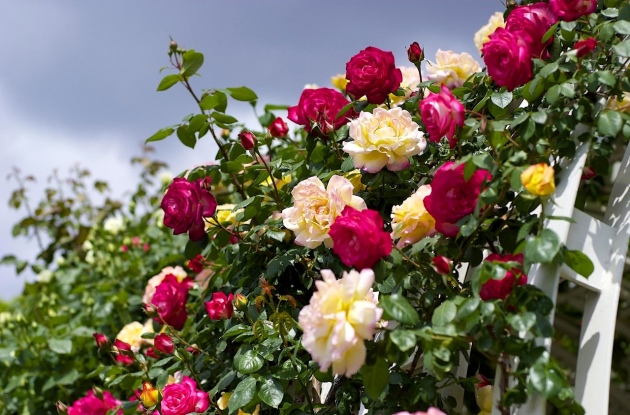
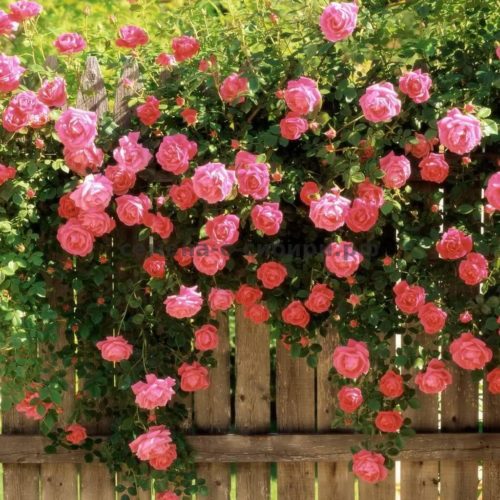

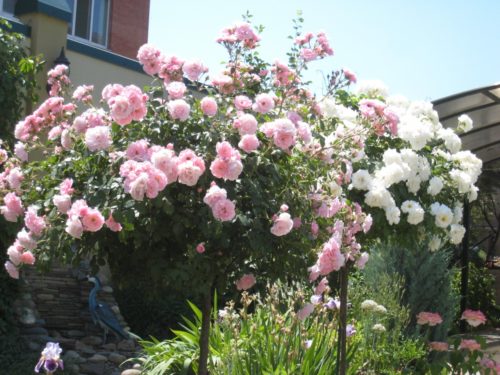
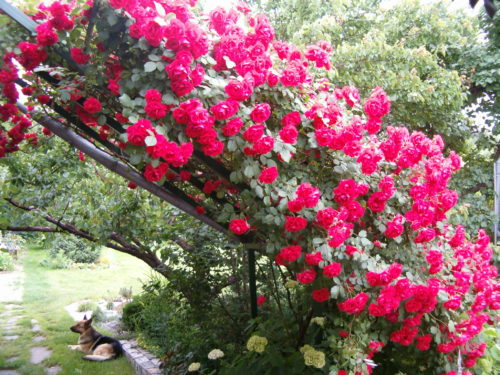
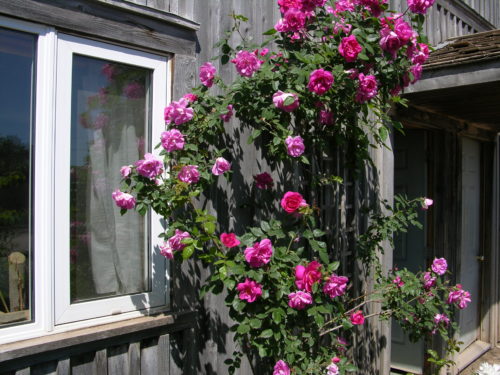


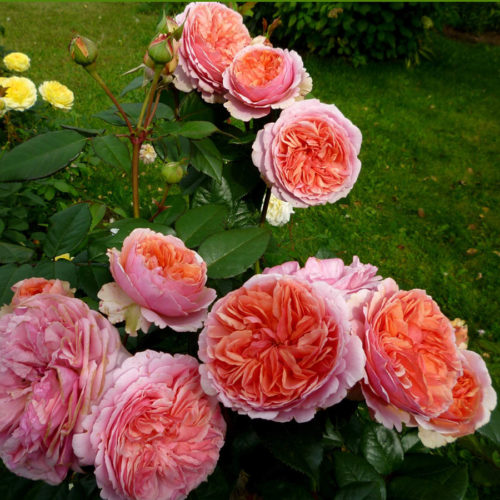

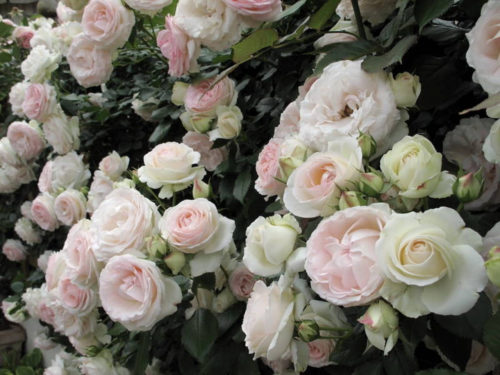
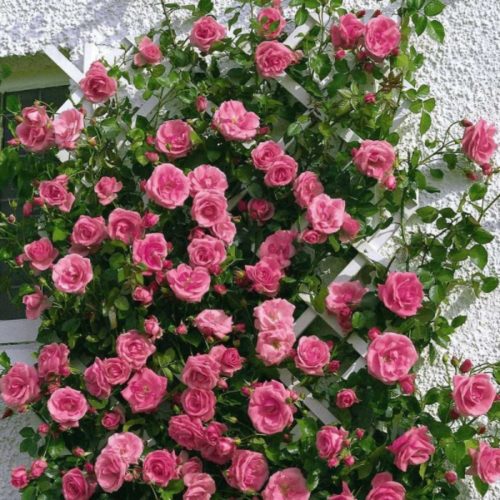
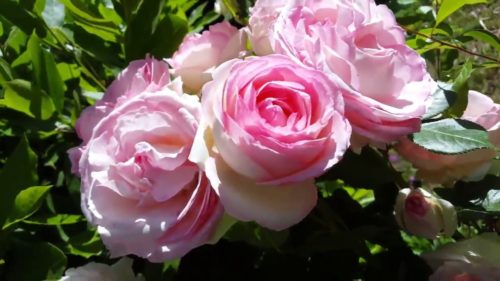


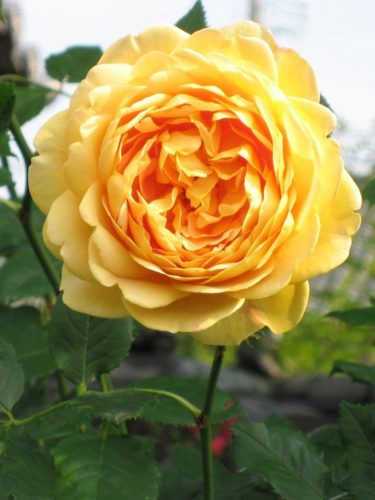
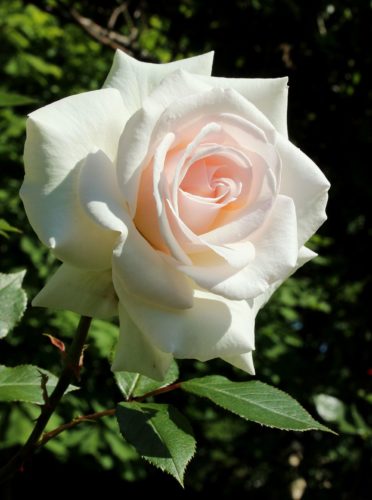

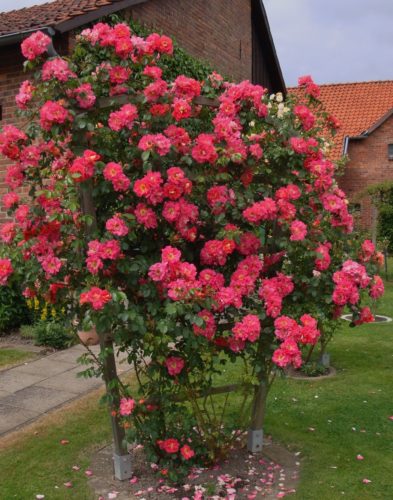
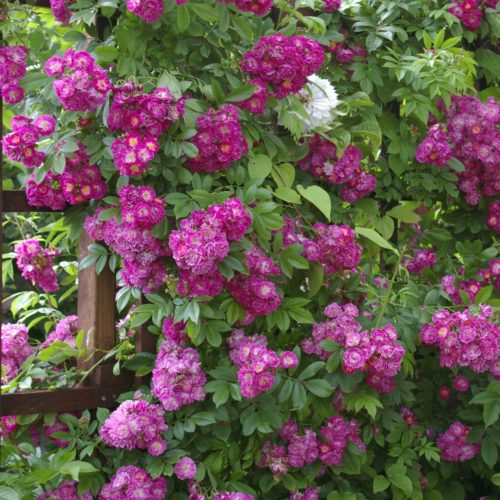


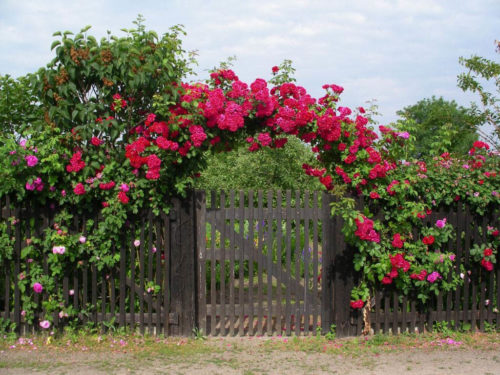
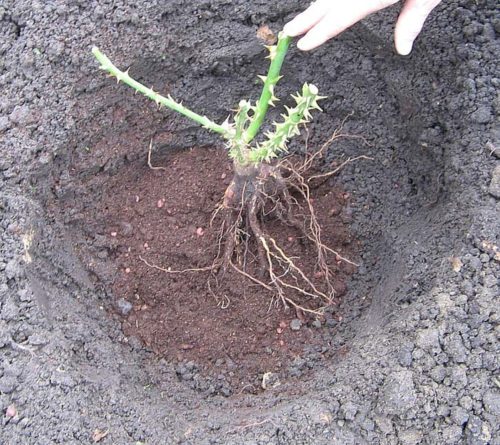
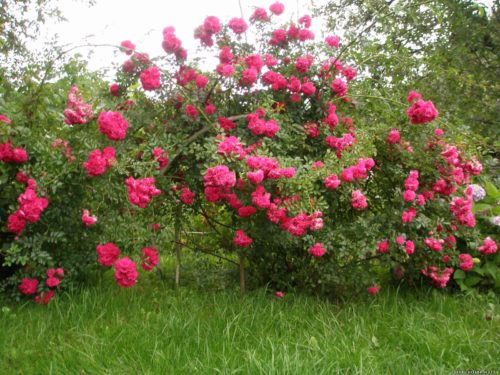


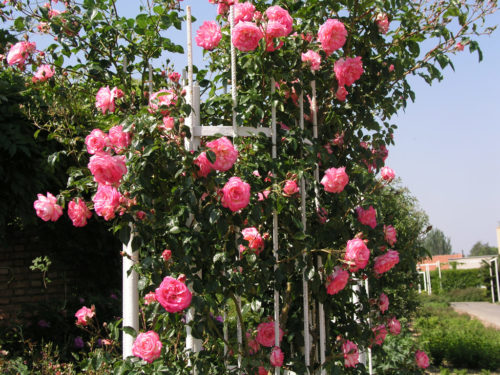
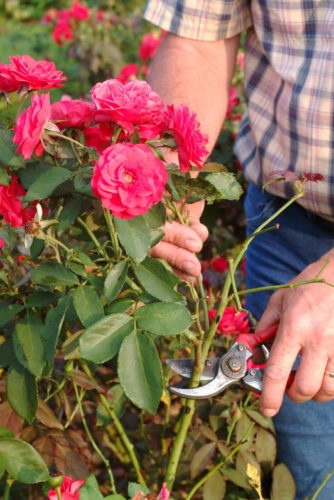












 Start a discussion ...
Start a discussion ...